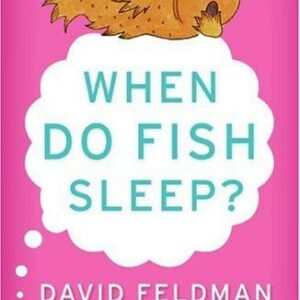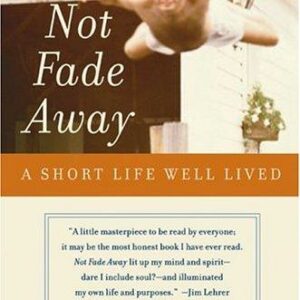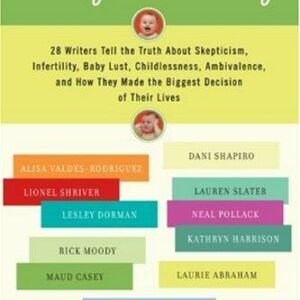Awe
$18.00
| Title | Range | Discount |
|---|---|---|
| Trade Discount | 5 + | 25% |
- Description
- Additional information
Description
“Read this book to connect with your highest self.”
—Susan Cain, #1 New York Times bestselling author of Bittersweet and Quiet
From a foremost expert on the science of emotions, a groundbreaking and essential exploration into the history, science, and greater understanding of awe.
Awe is mysterious. How do we begin to quantify the goose bumps we feel when we see the Grand Canyon, or our utter amazement when we watch a child walk for the first time? Until recently, there was no science of awe, that feeling we experience when we encounter vast mysteries that transcend our understanding of the world. Revolutionary thinking, though, has shown how humans have survived over the course of evolution thanks to our capacities to cooperate, form communities, and create culture—all of which are spurred by awe.
In Awe, Dacher Keltner presents a sweeping investigation and deeply personal inquiry into this elusive feeling. Revealing new research alongside an examination of awe across history, culture, and within his own life, Keltner shows us how cultivating awe in our everyday lives leads us to appreciate what is most humane in our human nature. At turns radical and profound, brimming with enlightening and practical insights, Awe is our field guide for how to place this emotion as a vital force within our lives.“Humanity has a lot of loss to work through. Keltner has written the perfect guidebook for this journey, interweaving discoveries that he and his disciples have made since he pioneered the scientific study of awe 20 years ago with highly personal—and at times excruciatingly tender—meditations on the death of his brother Rolf.” —Harvard Business Review
“A gifted storyteller, Keltner draws on the experiences of individuals across the world to document the salutary impact of everyday, wild and mystical encounters with nature, music, visual art, literature, religion, the birth of children, and the death of loved ones.” —Psychology Today
“Not only scientifically rigorous, but heartfelt and thoroughly inspiring.” —Mindful
“This book is destined to become a classic . . . [Keltner] looks at how awe transforms thoughts of self, one’s relationship to the world, and physical reactions to it . . . He also probes life and death, while positing eight wonders of life where awe reveals personal insights into the meaning of life.” —Library Journal (starred review)
“Fascinating . . . A timely reminder to appreciate the awe-inspiring everyday wonders flourishing all around us. . . Through his work as an expert in the science of goodness and human emotions, Keltner ably renders these transformative, defining moments with illuminative prose and encouragement for readers seeking their own awe-inspired deliverance.” —Kirkus
“Wonderful . . . Eye-opening science and Keltner’s appropriate sense of wonder add up to an enlightening take on the importance and potency of awe. Readers will be enchanted.” —Publishers Weekly
“We need more awe in our lives, and Dacher Keltner has written the definitive book on where to find it. As a preeminent expert on the science of awe, he does a masterful job demystifying this powerful emotion and unpacking how it both elevates us and grounds us.” —Adam Grant, #1 New York Times bestselling author of Think Again
“Your goosebumps when you listen to Beethoven; your wonder as you behold the Grand Canyon; your amazement at the sheer perfection of a baby’s tiny foot. You’ve probably sensed that such moments of awe are some of the most profound experiences ever to happen to you. But if you’ve ever wondered where these moments come from, what they mean, and how to experience them more often: there is no better guide than Dacher Keltner, the great and wise Berkeley psychologist. Read this book to connect with your highest self.” —Susan Cain, #1 New York Times bestselling author of Bittersweet and Quiet
“Twenty years of insight about awe. Whoa! On every continent and in every imaginable religion. Wow. Intensely personal, recognizably collective, and utterly universal, Keltner’s stories and science of awe are inspired. Awe merges us with systems larger than self—nature, music, art, spirit, morality, collectives, life and death. We are better for Keltner’s account. Read it. Aahhh.” —Susan T. Fiske, co-author of Social Cognition and author of Envy Up, Scorn Down
“Awe is awesome in both senses: a superb analysis of an emotion that is strongly felt but poorly understood, with a showcase of examples that remind us of what is worthy of our awe.” —Steven Pinker, Johnstone Professor of Psychology, Harvard University, and author of How the Mind Works and Rationality
“An engaging and insightful exploration of the ordinary magic that connects us to the world, to each other, and to the meanings of our lives. The ‘science of wow’ has finally arrived.” —Daniel Gilbert, Edgar Pierce Professor of Psychology, Harvard University, author of the New York Times bestseller Stumbling on Happiness, and host of the PBS television series This Emotional Life
“It is rare for a book to dive into a single emotion to analyze it from every possible angle. Dacher Keltner’s expertise makes it a fascinating and stimulating journey to recognize awe as a mysterious force in our lives.” —Frans de Waal, author of Different: Gender Through the Eyes of a Primatologist
“Through powerful and compelling stories of transformation and passion, Keltner expertly introduces us to feel the mighty emotion of AWE—something we all need more of in our lives.” —Pete Docter, director of Monsters, Inc., Up, Soul, and Inside Out
“A researcher who has taught us new ways to think about generosity and cooperation has turned his attention to one of the most understudied emotions of all, Awe. Eye-opening and mind expanding.” —Sarah Blaffer Hrdy, author of Mother Nature and Mothers and Others: The Origins of Mutual Understanding
“This extraordinary book explores the power of awe and amazement in our lives and in the life of this world. It reveals the gift of awe from the perspectives of science, the self, and society. Written with passion and clarity, it is a book that itself nourishes awe and turns us toward our lives with fresh eyes and an open heart.” —Roshi Joan Halifax, Abbot, Upaya Zen Center
“Our troubling times, our clickbait media, even our own habits of mind, blanket our consciousness with the negative and threatening in life. This book is a counter force. Powerful, erudite, rooted in brilliant research, but always fascinatingly accessible, it uplifts the wonderful in life. From the beauty of movement in sports to the moral courage of a friend, it’s a guide to how to see and experience the wonder that is always all around us. It balances consciousness. It has been a long time since I’ve read anything as inspiring. I’d say race to read it. You won’t be disappointed.” —Prof. Claude M. Steele, Lucie Stern Professor Emeritus of Psychology at Stanford University
“Dacher Keltner has written a deeply personal, scientifically brilliant treatise on an emotion he convinces us we need to experience more often in our daily lives.” —Richard E. Nisbett, author of Mindware: Tools for Smart ThinkingDacher Keltner is a professor of psychology at the University of California, Berkeley, and the faculty director of UC Berkeley’s Greater Good Science Center. A renowned expert in the science of human emotion, Dr. Keltner studies compassion and awe, how we express emotion, and how emotions guide our moral identities and search for meaning. His research interests also span issues of power, status, inequality, and social class. He is the author of The Power Paradox, the bestselling books Born to Be Good and Awe, and the coeditor of The Compassionate Instinct.One
Eight Wonders of Life
An Awe Movement Begins
The strange thing about life is that though the nature of it must have been apparent to
every one for hundreds of years, no one has left any adequate account of it. The streets of
London have their map; but our passions are uncharted.
¥ Virginia Woolf
The last time the word “awe” hit me with the force of personal epiphany, I was twenty-seven years old. I was in Paul Ekman’s living room, having just interviewed for a fellowship in his lab to study emotion. Ekman is well-known for his study of facial expression, and a founding figure in the new science of emotion. At the conclusion of his querying, we moved to the deck off his home in the San Francisco hills. We were embraced by a view of the city. Thick fog moved through the streets toward the Bay Bridge and eventually across the bay to Berkeley.
Stretching for conversation, I asked Paul what a young scholar might study. His answer was one word:
Awe.
At that time-1988-we knew very little scientifically about emotions: what they are, how they influence our minds and bodies, and why we experience them in the first place.
Psychological science was firmly entrenched in a “cognitive revolution.” Within this framework, every human experience, from moral condemnation to prejudice against people of color, originates in how our minds, like computer programs, process units of information in passionless ways. What was missing from this understanding of human nature was emotion. Passion. Gut feeling. What Scottish philosopher David Hume famously called the “master of reason,” and Nobel Prize winner Daniel Kahneman, in Thinking, Fast and Slow, termed “System 1” thinking.
Emotions have long been viewed as “lower” and animalistic, disruptive of lofty reason, which is often considered humanity’s highest achievement. Emotions, so fleeting and subjective, others observed, cannot be measured in the lab. Our passions were still very much uncharted some seventy years after Virginia Woolf’s musing.
Ekman, though, would soon publish a paper-now the most widely cited in the field-that would push the scientific pendulum firmly toward emotion. In this essay, a field guide really, he detailed the what of emotions: They are brief feeling states accompanied by distinct thoughts, expressions, and physiology. Emotions are fleeting, shorter-lived than moods, like feeling blue, and emotional disorders, such as depression. He outlined how emotions work: they shift our thought and action to enable us to adapt to our present circumstances. To approach the why of emotions, Ekman took a cue from Charles Darwin: Emotions enable us to accomplish “fundamental life tasks,” such as fleeing peril, avoiding toxins, and finding nutritious food. Emotions are central to our individual survival and our evolution as a species.
A young science had a field guide, and scholars promptly went exploring. First, scientists mapped anger, disgust, fear, sadness, surprise, and joy, the emotions whose facial expressions Ekman had documented in the hills of New Guinea in the early 1960s. Next to appear in the lab were the self-conscious emotions-embarrassment, shame, and guilt. Studies charted how these states arise when we make social mistakes, and how blushes, head bows, awkward appeasing smiles, and apologies restore our standing in the eyes of others. Sensing that there is more to the mind, brain, and body than negative emotions, and more to the delights of life than “joy,” young scientists then turned to studies of states like amusement, gratitude, love, and pride. My own lab got into the act with studies of laughter, gratitude, love, desire, and sympathy.
An emotion revolution in reaction to the cognitive revolution was underway, moving psychological science beyond its dry and cool cognitivist account of the mind and inattention to the body. Neuroscientists were mapping “the emotional brain.” Studies alerted those interested in the secrets of love to the finding that marriages dissolve when partners express contempt to one another. Our culture wars over abortion, race, class, and climate crises could be traced back to gut feelings about the moral issues of our times. For faring well in life, emotion scientists determined that we are better served by cultivating our “emotional intelligence,” or EQ, than our IQ. Today we are still in the midst of “an age of emotion” in science, one that shapes every corner of our lives.
One emotion, though, would not get the call for this revolution, an emotion that is the provenance of so much that is human-music, art, religion, science, politics, and transformative insights about life. That would be awe. The reasons are in part methodological. Awe seems to resist precise definition and measurement, the bedrock of science. In fact, how would a scientist study awe in a lab? How could scientists lead people to feel it on cue and measure its near-ineffable qualities, or document how awe transforms our lives, if, indeed, it does?
There were theoretical barriers as well. As the science of emotion got off the ground, it did so in a theoretical zeitgeist that held that emotions are about self-preservation, oriented toward minimizing peril and advancing competitive gains for the individual. Awe, by contrast, seems to orient us to devote ourselves to things outside of our individual selves. To sacrifice and serve. To sense that the boundaries between our individual selves and others readily dissolve, that our true nature is collective. These qualities did not fit neatly within the hyperindividualistic, materialistic, survival-of-the-selfish-genes view of human nature so prominent at the time.
One cannot help but suspect that personal hesitations were at play as well. When people talk about experiences of awe, they often mention things like finding their soul, or discovering what is sacred, or being moved by spirit-phenomena that many believe to be beyond measurement and the scientific view of human nature.
Emotion science had a field guide, though, a road map for charting the what, how, and why of awe. What awe needed first was a definition, the place where all good scientific stories begin. What is awe?
Defining Awe
With emotion science turning its attention to the varieties of positive emotion, in 2003 my longtime collaborator at New York University Jonathan Haidt and I worked to articulate a definition of awe. At the time, there were only a few scientific articles on awe (but thousands on fear). There were no definitions of awe to speak of.
So we immersed ourselves in the writings of mystics about their encounters with the Divine. We read treatments of the holy, the sublime, the supernatural, the sacred, and “peak experiences” that people might describe with words like “flow,” “joy,” “bliss,” or even “enlightenment.” We considered political theorists like Max Weber and their speculations about the passions of mobs whipped up by demagogues. We read anthropologists’ accounts of awe in dance, music, art, and religion in faraway, remote cultures. Drawing upon these veins of scholarship, we defined awe as follows:
Awe is the feeling of being in the presence of something vast that transcends your current understanding of the world.
Vastness can be physical-for example, when you stand next to a 350-foot-tall tree or hear a singer’s voice or electric guitar fill the space of an arena. Vastness can be temporal, as when a laugh or scent transports you back in time to the sounds or aromas of your childhood. Vastness can be semantic, or about ideas, most notably when an epiphany integrates scattered beliefs and unknowns into a coherent thesis about the world.
Vastness can be challenging, unsettling, and destabilizing. In evoking awe, it reveals that our current knowledge is not up to the task of making sense of what we have encountered. And so, in awe, we go in search of new forms of understanding.
Awe is about our relation to the vast mysteries of life.
What about the innumerable variations in awe? How awe changes from one culture to another, or from one period in history to another? Or from one person to another? Or even one moment in your life to another?
The content of what is vast varies dramatically across cultures and the contexts of our lives. In some places it is high-altitude mountains, and in others flat never-ending plains with storms approaching. For infants it is the immense warmth provided by parents, and when we die, the enormous expanse of our lives. During some historical periods it is the violence humans are capable of, and during other times protests in the streets against the machines and institutions that perpetrate violence. The varieties of vastness are myriad, giving rise to shifts in the meaning of awe.
“Flavoring themes,” Jon and I reasoned, also account for variations in awe. By flavoring themes, we meant context-specific ways in which we ascribe meaning to vast mysteries. For example, you shall learn that extraordinary virtue and ability can lead us to feel awe. Conceptions of virtue and ability vary dramatically according to context: whether, for example, we find ourselves in combat or at a meditation retreat, whether we are part of a hip-hop performance or a chess club, whether we live in a region of religious dogma or one governed by the rules of Wall Street. How we conceptualize virtue and ability within our local culture gives rise to variations in awe.
Another flavoring theme that shapes the experience of awe is supernatural belief systems-beliefs, for example, about ghosts, spirits, extraordinary experiences, gods, the Divine, heaven, and hell. These beliefs imbue experiences of awe with culturally specific meanings. For example, for many people across history, experiences of awe in encounters with mountains, storms, winds, the sun, and the moon have been flavored with local stories and beliefs about the Divine. For others, those same mountains, storms, winds, the sun, and the moon stir a different kind of awe, one more grounded in a sense of what is sacred about nature but lacking the sense of the Divine.
Perhaps most pervasively, perceived threat also flavors experiences of awe, and can layer fear, uncertainty, alienation, and terror into our experience of the emotion. Perceptions of threat explain why people in certain cultures-such as the Japanese or Chinese-feel more fear blended with awe when around inspiring people than people from less hierarchical cultures do. Why psychedelic experiences with LSD, MDMA, or ayahuasca inspire pure awe for some and are flooded with terror for others. Why encounters with the Divine are filled with fear in some cultures, whereas in other cultures that lack ideas about a judgmental God they are defined by bliss and love. Why dying is oceanic and awe-filled for some and horrifying for others. And why cultural symbols like the American flag can move some to tears and chills, and others to shudder in the sense of threat and alienation.
In awe we encounter the vast mysteries of life, with flavoring themes like conceptions of virtue, supernatural beliefs, and perceived threat giving rise to near-infinite variations.
Eight Wonders of Life
Emotions are like stories. They are dramas that structure our day, like scenes in a novel, movie, or play. Emotions unfold in actions between people, enabling us, for example, to comfort someone in need, show devotion to a loved one, redress injustice, or belong to a community. Having defined awe, our answer to the question “What is awe?” needs next to move to people’s own stories of the emotion.
When William James, a founding figure in psychology, went in search of understanding mystical awe at the turn of the twentieth century-an exploration we will consider later-he did not have people rate their feelings with numbers. He did not do experiments. He did not measure physiological reactions or sensations, which had long fascinated him. Instead, he gathered stories: First-person narratives, utterly personal, about encounters with the Divine. Religious conversions. Spiritual epiphanies. Visions of heaven and hell. And in discerning the patterns in these stories, he uncovered the heart of religion: that it is about mystical awe, an ineffable emotional experience of being in relation to what we consider divine.
Guided by this approach, Professor Yang Bai, a longtime collaborator of mine, and I gathered stories of awe from people in twenty-six countries. We cast our net broadly because of the scientific concern about “WEIRD” samples: those composed disproportionately of people who are Western, Educated, Individualist, Rich, and Democratic. Our participants were anything but WEIRD. Participants included adherents to all major religions-many forms of Christianity, Hinduism, Buddhism, Islam, and Judaism-as well as denizens of more secular cultures (e.g., Holland). Our participants varied in terms of their wealth and education. They lived within democratic and authoritarian political systems. They held egalitarian and patriarchal views of gender. They ranged in their cultural values from the more collectivist (e.g., China, Mexico) to the more individualistic (e.g., the United States).
In our study, people were provided with the definition of awe you have considered: “Being in the presence of something vast
and mysterious that transcends your current understanding of the world.” And then they wrote their story of awe. Speakers of twenty languages at UC Berkeley translated the 2,600 narratives. We were surprised to learn that these rich narratives from around the world could be classified into a taxonomy of awe, the eight wonders
of life.
What most commonly led people around the world to feel awe? Nature? Spiritual practice? Listening to music? In fact, it was other people’s courage, kindness, strength, or overcoming. Around the world, we are most likely to feel awe when moved by moral beauty, the first wonder of life in our taxonomy. Exceptional physical beauty, from faces to landscapes, has long been a fascination of the arts and sciences, and moves us to feelings of infatuation, affection, and, on occasion, desire. Exceptional virtue, character, and ability-moral beauty-operate according to a different aesthetic, one marked by a purity and goodness of intention and action, and moves us to awe. One kind of moral beauty is the courage that others show when encountering suffering, as in this story from the United Kingdom:
The way my daughter dealt with the stillbirth of her son. I was with her at the hospital when he was delivered and her strength in dealing with this left me in awe. My little girl grew up overnight and exhibited awesome strength and bravery during this difficult time.
The courage required in combat is another time-honored source of awe. This is a stirring theme found in Greek and Roman myths, gripping scenes in films like Saving Private Ryan, and war stories veterans tell, as in this story from South Africa:
I was in the Angolan war. One of our soldiers got shot. An officer risked his life and fears to drag the soldier to safety. In the process the officer was wounded but continued saving the soldier’s life. I came out of hiding and secured the area for enough time in order for the officer to drag the soldier to safety.US
Additional information
| Weight | 9.2 oz |
|---|---|
| Dimensions | 0.7500 × 5.5100 × 8.1600 in |
| Imprint | |
| Format | |
| ISBN-13 | |
| ISBN-10 | |
| Author | |
| Audience | |
| BISAC | |
| Subjects | best books, inspirational books, mindset, PSY008000, nerdy gifts, positive psychology, BIO021000, science book, dad books, mom books, science books, best books 2023, science books for adults, spiritual books, psychology book, cognitive psychology, brain books, social psychology, spiritual book, science ebooks, health, self improvement, mental health, psychology, spirituality, self help, mindfulness, meditation, science, books for dad, philosophy, happiness, emotion, Emotions, books for mom, wonder, psychology books, mental health books, consciousness |











